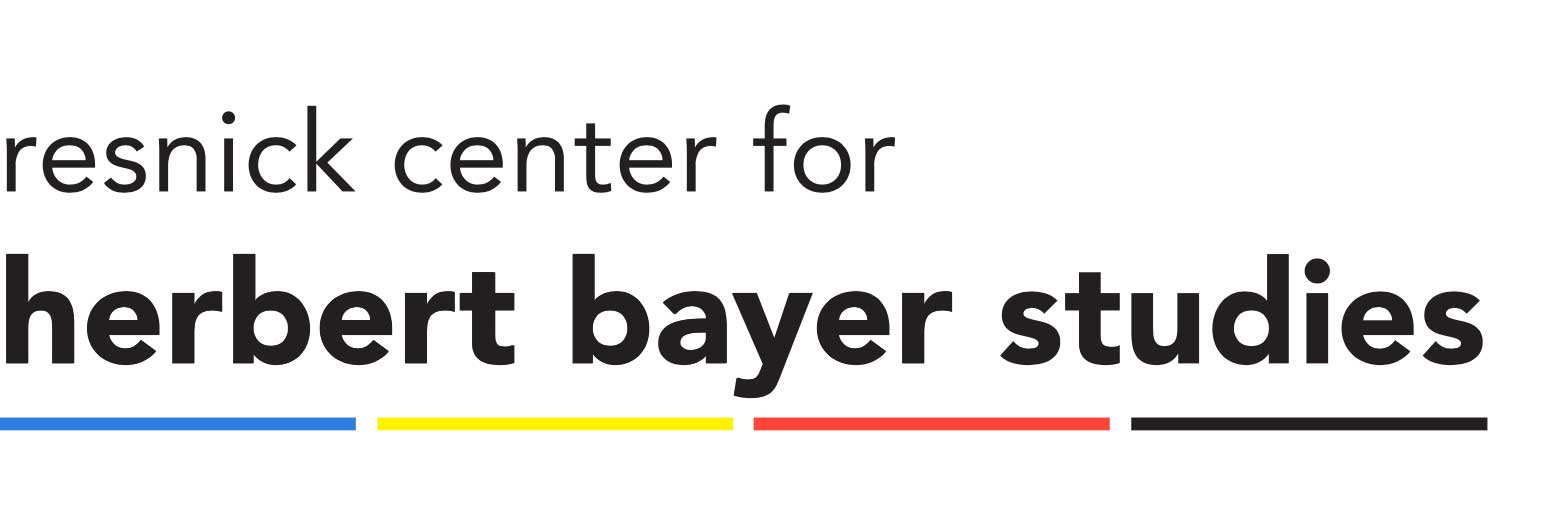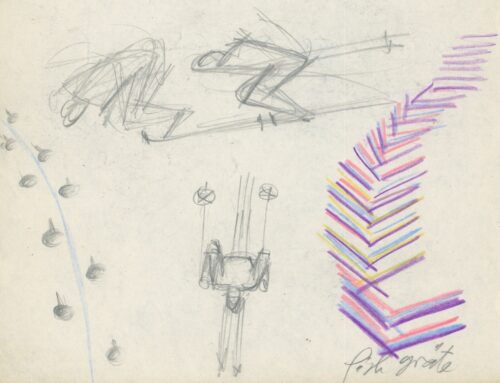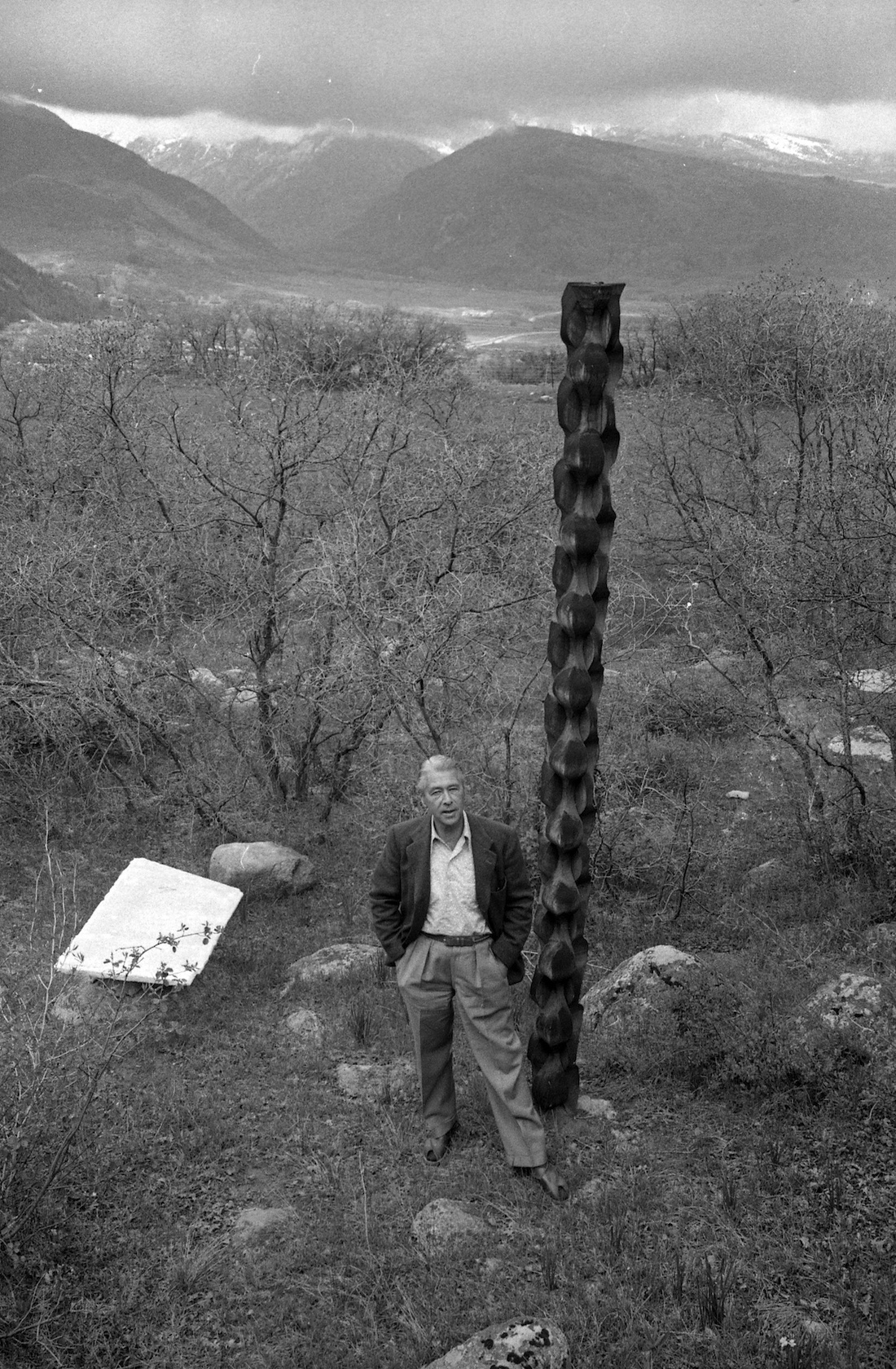
Aspen Historical Society, Hiser Collection
Recreating Herbert Bayer’s Wood Totem
A recent gift to the Bayer Center comes with an interesting backstory.
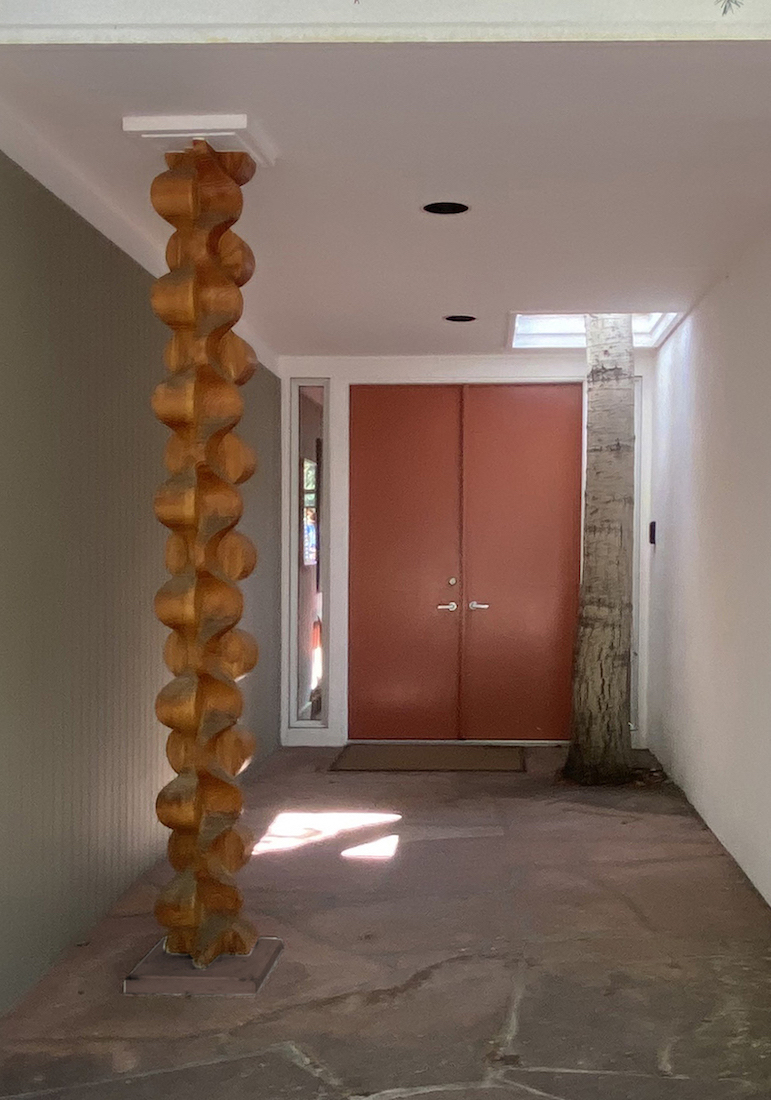
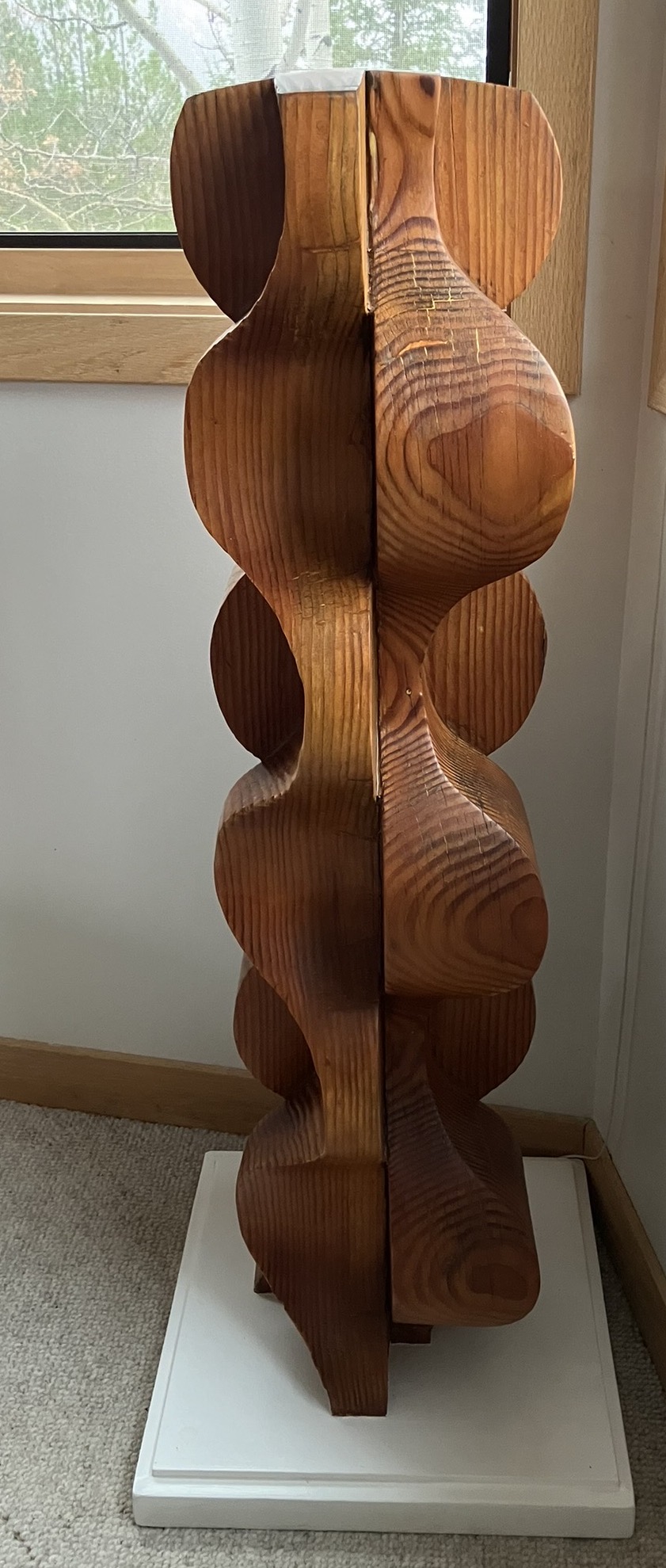
Recently, a posthumous version of Herbert Bayer’s wood totem was gifted to the Bayer Center by the Merriam and Crété families. The column will be on display in our next exhibition, Sculpting the Environment, The Three-Dimensional Work of Herbert Bayer, opening in June 2025.
In the early 1950s, Herbert Bayer designed an 11-foot wooden totem inspired by an idea conceived of by his friend, sculptor and woodworker James Prestini. Prestini used a jigsaw to cut a waveline into a 6” x 6” fir post, then made two lengthwise cuts. The four resulting pieces were then turned inside out and glued together, creating the final form. The totem stood outside Bayer’s studio on Red Mountain for over 20 years.
Bayer’s close friend Merrill Ford thought a replica of the column would be the perfect addition to the exterior of the home of her friends Alec and Gail Merriam and Joanie and Guillaume Crété, a wing of which had been designed by Herbert Bayer. In the 1990s, she asked the late Bill Fallberg, a Carbondale-based artist and machinist, to make a replica of the piece using a drawing from Bayer’s sketchbook. An article from the Glenwood Post Independent says Fallberg imagined the project “would require a huge amount of carving, or some serious thinking because the angled and curved cuts and the depth and precision needed to recreate the piece were simply too much for a generic saw.”
Ultimately, Fallberg invented a special machine just for the project, which he called an architectural scrollsaw. Likening it to a portable bandsaw it was perfect, he said, for cutting arches, architectural details, and trusses. When it was complete, the piece was too large for the space, so Merrill lopped off the top and then had the rest installed, unbeknownst to the Merriams. Finally, she sent them an invoice–$2,500–for the entire project.
James Prestini (1908-1993) was an internationally recognized craftsman, sculptor, and educator in the tradition of the Bauhaus. Like Bayer, Prestini was a polymath, working as a mathematician, engineer, sculptor, professor of design, and woodturner. Influenced by the work of his father, an Italian stonecutter, and by the crisp Bauhaus aesthetic of Laszlo Moholoy-Nagy, Mies van der Rohe, and others, Prestini’s work was elegant and simple, embodying the essence of timeless design. Prestini felt strongly that practical training and creative design were inseparable. Craft, he said, “is the body of structure. Art is the soul of structure. Optimum creativity integrates both.” From 1933-1953, Prestini was considered the father of the contemporary woodturning movement in the United States.
Many thanks to Joanie and Guillaume Crété for stewarding this donation, and to Joanie’s parents, Gail and Alec Merriam, and Koko Bayer for sharing their knowledge about this unique piece.
more
